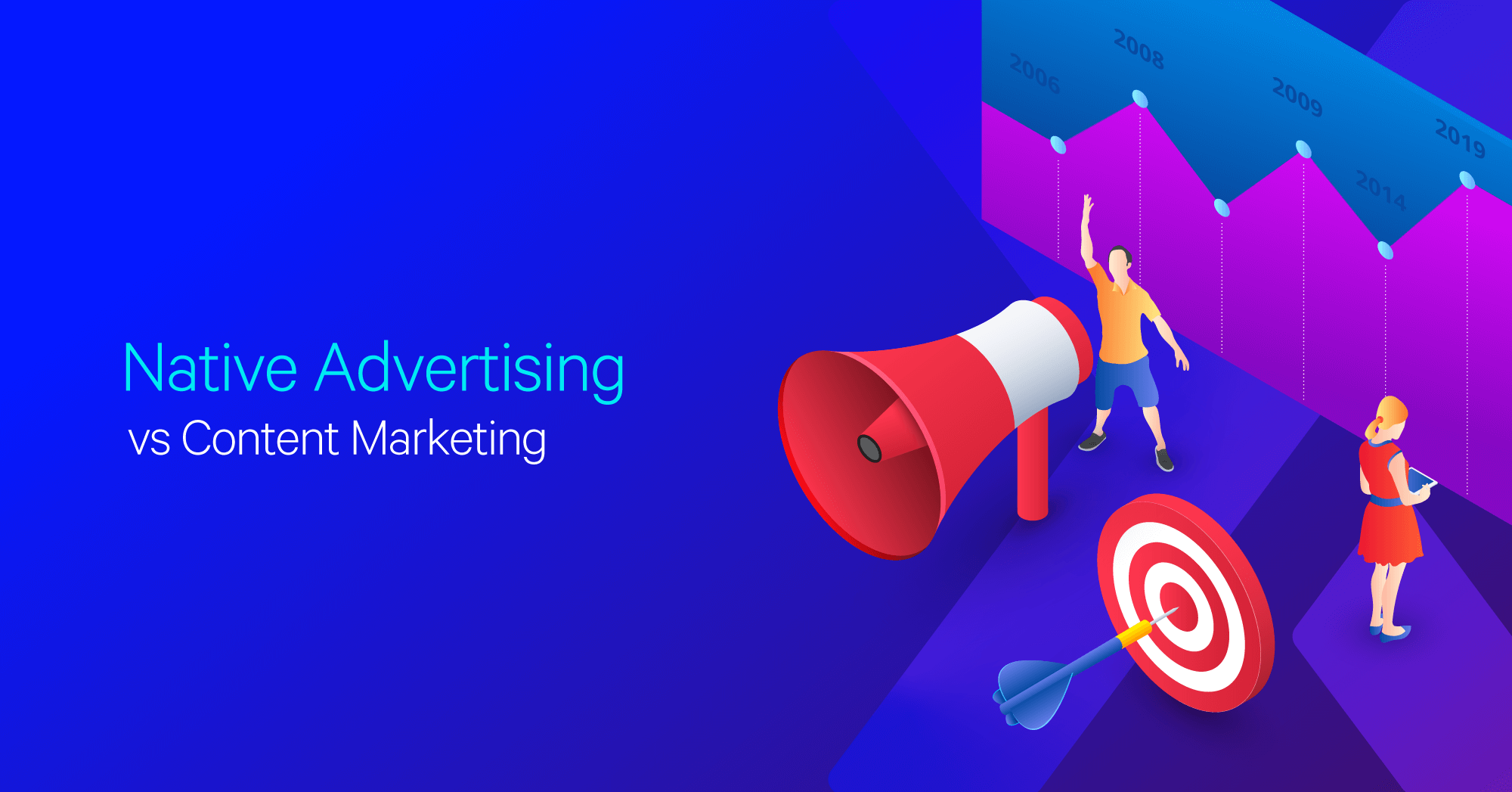Native Advertising vs Content Marketing

Hand off the toughest tasks in SEO, PPC, and content without compromising quality
Explore ServicesWhen it comes to planning a campaign around content, you will likely encounter these two terms. While they are both based around writing copy for online sources, they are very different. But there seems to be some confusion for people new to digital marketing what they mean.
It’s important to know that native advertising vs content marketing are two different things. Native advertising does not mean content marketing. It is a very specific content strategy that is made to look like it’s the same thing.
If you want to get the most out of each marketing strategy, it’s important to know the differences between them. That’s why we wrote this quick guide to help you understand what each of them really is.
Native Advertising vs Content Marketing
If you want to remember the key differences between native advertising and content marketing, it comes down to paid vs organic. Content marketing is all about creating content that people find through their own research. Native advertising involves paying to place content in front of someone as they browse online.
Quality content + SEO research
You tell us the keywords you want to target, and we’ll analyze the SERPs, research your keywords then write the content your audience (+ Google) wants to see.
There’s more to it than that, but that’s the key distinction between them. Want to know more about the differences? Let’s break them each down individually:
What is native advertising?
Native advertising is a form of paid advertising that places your content on someone else’s media space. Unlike other types of online banner ads, native ads are made to look like the same kind of content you would see on that website.
They are meant to avoid looking intrusive so they don’t look like ads. Your content in a native should integrate seamlessly into the rest of the regular content on the same website. The end goal of your native ad will be to promote your business and/or its products and services.

Here’s a perfect example of a great native ad. Back in 2014, Netflix wanted to promote its new show Orange Is The New Black, which was set in a women’s prison. They wrote an article about the issues women face in a prison system designed for men, and had it published on the New York Times website.
Advantages:
- >Native ads are not blocked by ad blocking software that more people are starting to use
- >Cost per click is typically lower than more traditional online ads
- >People distrust and dislike intrusive ads, so native ads can help bypass that for better results
- >You can find a new way to promote your business among new audiences you had not reached before
Disadvantages:
- >You have less control over the content you create for a native ad because it is on someone else’s platform
- >It takes more time and work to find good opportunities and then create content to make it look unobtrusive
- >Native ads have a more narrow range of opportunity
What is content marketing?
Content marketing is a strategy involving the process of creating content that people find interesting. You research topics that are relevant to your business, and write them in a way that people will find when they are researching information in your niche.
With content marketing, you aren’t paying to get in front of a user. You are building a structure of content for users to find on their own. It can include all types of content: text, videos, infographics, podcasts, and so on.
With creating content (and especially content marketing for small business), you own every part of the process. You have complete control over where, when and how content is published on the platforms you own. It gives you more flexibility than what you would have when creating content for a native ad. You can use your own style and voice without having to adjust it for another platform.
An example of great content marketing is the hub and spoke model. Wine Folly created a great hub and spoke system for their beginner’s guide on wine. It combined interesting graphics, and content covering every part of buying, drinking, serving, and owning wine.

Source: https://winefolly.com/wine-basics-beginners-guide/
Why is content marketing important? Let’s talk about the drawbacks and benefits of content marketing:
Advantages:
- >You control every part of the process
- >You do not have to pay to publish or promote your own content
- >It is one of the best ways to generate leads from people actively researching information related to your business
- >You establish your business as an authority on relevant topics to people who learn from your content
Disadvantages:
- >SEO is very competitive and it can be difficult to rank for some keywords organically
- >It can be a time consuming process to do it well
- >The exposure you get is limited by people in your market actively searching for information related to your business
What’s the Difference Between Native Advertising and Content Marketing?
Here is a list of all the important differences between native advertising and content marketing.
Paid vs owned content
As we’ve already touched on, native ads are really paid ads. They are less intrusive ads than other kinds, but you are still paying someone else to have your content placed in their space. With content marketing you control the website it gets published on, the social media accounts that promote it, and so on.
Short term vs long term
Native ads have a much more immediate goal, and their cycle tends to have a shorter term. You produce the content, it gets promoted on another platform, and you want it to drive leads and conversions right away.
Content marketing has a much slower development path. You don’t just create a one-off piece, you create a whole network of related content that interlinks with each other. The goal with content marketing is to generate traffic and conversions for a long period of time.
Narrow vs broad targeting
With native advertising, you are creating one piece of content to appeal to a narrow audience. It needs to target the audience that most wants the product or service you’re promoting. But it also needs to target the audience that reads or browses the other platform, in the voice and style they like.
Content marketing is designed to target everyone who may search for information related to your business. You want to be as broad as possible with the content you create for them, which is why you create so much content. You also create content in as many different types as you can, so you appeal to different preferences.
Specific piece vs content hub
Content for native ads tend to be one-offs. If you do create more than one piece of content, they won’t link or relate to each other. The topics are specifically chosen for the platform and the audience.
With content marketing, the goal is to create a massive hub of content that encompasses everything related to your niche. That’s why the hub and spoke model is so popular in content marketing now.
Summary
Native ads and content marketing might have significant differences, but they each serve their own purpose. The question should not be based on which strategy you should use and which you should ignore. The best overall strategy should be to use both.
You might also like: Places to Advertise Your Business Online
Native ads help you get in front of a whole new audience you can’t reach with your content marketing. But your content marketing helps you reach a more broad and actively interested audience for no cost.
While you shouldn’t confuse the two, they do both focus on quality and interesting content that will engage with your audience. In the end, they also share the same ultimate goal of driving more business online.
Hand off the toughest tasks in SEO, PPC, and content without compromising quality
Explore ServicesWritten by Jake Sheridan on August 31, 2020
Founder of Sheets for Marketers, I nerd out on automating parts of my work using Google Sheets. At Loganix I build products, and content marketing. There’s nothing like a well deserved drink after a busy day spreadsheeting.





